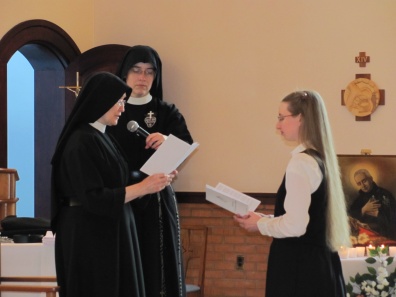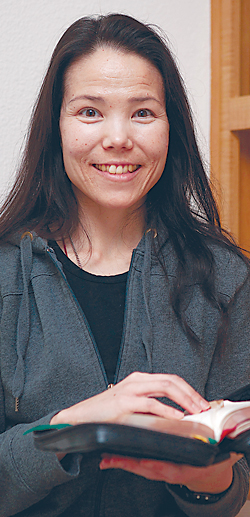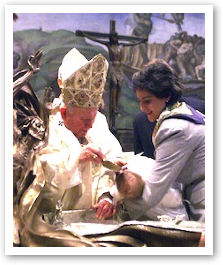 I always keep on my desk a leaflet from the Apostleship of Prayer, containing the Pope’s intentions for each month. It just dawned on me that this would be a most helpful thing to post at the beginning of each month.
I always keep on my desk a leaflet from the Apostleship of Prayer, containing the Pope’s intentions for each month. It just dawned on me that this would be a most helpful thing to post at the beginning of each month.
It’s good to recall that all vocations come through the Church. They’re not about “doing our own thing.” Uniting ours prayers with those of the Holy Father and the universal Church is an excellent way to open ourselves to God’s personal call in our lives.
Before giving the Pope’s intentions for March (I’m almost a week late, so another few minutes won’t hurt anybody), I’d like to recommend two privileged times for remembering the Pope’s intentions:
First, there’s the Morning Offering, which is a great way to commit our day to the Lord:
O Jesus, through the Immaculate Heart of Mary, I offer You my prayers, works, joys, and sufferings of this day, in union with the holy sacrifice of the Mass throughout the world. I offer them for all the intentions of Your Sacred Heart: the salvation of souls, reparation for sin, and the reunion of all Christians. I offer them for the intentions of our bishops and for all the intentions recommended by our Holy Father this month. Amen.
Second, there’s the family Rosary. At the beginning or end of the Rosary, to gain the indulgence for praying the Rosary–and again to manifest the unity of our prayer with that of the universal Church–it’s customary to pray an Our Father, Hail Mary, and Glory Be for the Pope’s intentions.
But what are the Pope’s intentions this month? Here they are:
Latin American Nations. That the nations of Latin America may walk in fidelity to the Gospel and progress in justice and peace.
Persecuted Christians. That the Holy Spirit may give light and strength to those in many regions of the world who are persecuted and discriminated against because of the Gospel.
I will post his intentions for subsequent months at the beginning of each month. In the meantime, check out the website of the Apostleship of Prayer for more information on this pious practice.
 Of Gods and Men opened last week in several theaters across the United States. It’s a true story about a group of Trappist monks, stationed in an impoverished Algerian community under threat from fundamentalist terrorists, who must decide whether to stay or leave.
Of Gods and Men opened last week in several theaters across the United States. It’s a true story about a group of Trappist monks, stationed in an impoverished Algerian community under threat from fundamentalist terrorists, who must decide whether to stay or leave. I remember well my first Lent in a religious community in the 1980s. Most of us seminarians, like many people out in the world, gave up sweets for 40 days. The one time that this penance really came into play was during the afternoon coffee break. The nearby Au Bon Pain restaurant donated day-old pastries to the seminary, and these were typically brought out to give us a little sugar boost to get us through metaphysics and epistemology.
I remember well my first Lent in a religious community in the 1980s. Most of us seminarians, like many people out in the world, gave up sweets for 40 days. The one time that this penance really came into play was during the afternoon coffee break. The nearby Au Bon Pain restaurant donated day-old pastries to the seminary, and these were typically brought out to give us a little sugar boost to get us through metaphysics and epistemology. Yesterday we received a letter from our delightful daughter, Sr. Mary Kate. This one was special as it’s the last letter we will receive from her until after Easter.
Yesterday we received a letter from our delightful daughter, Sr. Mary Kate. This one was special as it’s the last letter we will receive from her until after Easter.

 As I was navigating through the outstanding new
As I was navigating through the outstanding new  This week the Vatican released the 2011 Lenten Message of Pope Benedict XVI. The message’s title is taken from St. Paul: “You were buried with Him in Baptism, in which you were also raised with Him” (Colossians 2:12).
This week the Vatican released the 2011 Lenten Message of Pope Benedict XVI. The message’s title is taken from St. Paul: “You were buried with Him in Baptism, in which you were also raised with Him” (Colossians 2:12). In recent weeks we have offered
In recent weeks we have offered  Last week the
Last week the